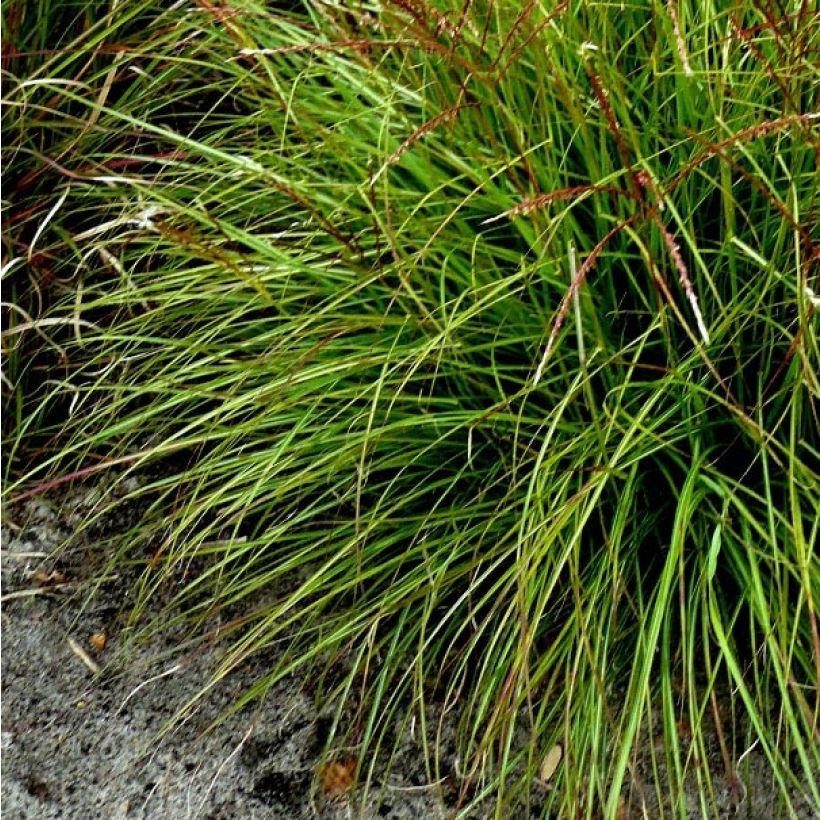

Miscanthus sinensis Cute One - Roseau de Chine nain.


Miscanthus sinensis Cute One - Roseau de Chine nain.


Miscanthus sinensis Cute One - Roseau de Chine nain.


Miscanthus sinensis Cute One - Roseau de Chine nain.


Miscanthus sinensis Cute One - Roseau de Chine nain.
Miscanthus sinensis Cute One - Silvergrass
Miscanthus sinensis Cute One
Eulalia, Porcupine Grass, Chinese silver Grass, Maiden Grass, Zebra Grass, Susuki Grass
This item cannot be shipped to the selected country
Delivery charge from €5.90
Delivery charge from €5.90
More information
Delivery charge from €5.90
Delivery charge from €5.90
More information
Schedule delivery date,
and select date in basket
This plant carries a 12 months recovery warranty
More information
We guarantee the quality of our plants for a full growing cycle, and will replace at our expense any plant that fails to recover under normal climatic and planting conditions.
From €5.90 for pickup delivery and €6.90 for home delivery
Express home delivery from €8.90.
From €5.90 for pickup delivery and €6.90 for home delivery
Express home delivery from €8.90.

Does this plant fit my garden?
Set up your Plantfit profile →
Description
Miscanthus sinensis 'Cute One' is a new Chinese reed with an incredibly compact habit. Slightly taller than a carex, but just as dense, this variety forms a beautiful clump of fine trailing leaves that cover the ground. In late summer, it is adorned with an aerial flowering of rare elegance, with slender undulate purple and cream feathery spikes that sway in the wind. 'Cute One' is water-efficient and grows easily in the sun in ordinary garden soil. Superb as ground cover, in border plantings, or in a pot.
Miscanthus sinensis, also known as eulalia or Chinese reed, belongs to the Poaceae family. 'Cute One' is a recent horticultural selection from this grass, native to China (in the pan-Himalayan region up to 2000m (6562ft) altitude), Korea, Japan, Taiwan, Malaysia, and New Zealand. This perennial and clump-forming 'herb', with a non-trailing stump and short rhizomes, forms a low clump with a spreading habit, reaching a height of 50cm (20in) and a spread of 30cm (12in). The leaves are slender, long, and flexible, tapering to a point. Their colour is a medium green with a very fine white midrib. They dry up in winter. In September-October, a large number of flowering stems emerge from the foliage, bearing slender, arched, digitate, and silky spikes that are 20cm (8in) long. They are initially tinged with purple. As they open, they become white-pink, then fade to a silvery hue. The plumes are made up of tiny pinkish flowers that close slightly after opening, only to reopen when mature. They then take on a paler and more feathery appearance.
Among ornamental grasses, Miscanthus is probably one of the most beautiful and least invasive. It has been the subject of numerous selections and is the origin of many cultivars. Chinese reed is a wonderful perennial that grows on its own, perfect for contemplative gardeners. It suits a modern garden with clean lines, or in large settings where it will lighten the floral display, leaving a sense of freedom in its wake. This 'Cute One' variety can be planted en masse along a pathway or in a border, where it will make a remarkable ground cover in a natural, urban, or contemporary style garden. Growing it in large containers on a patio will suit it perfectly. Its plumes make beautiful dried bouquets.
Miscanthus sinensis Cute One - Silvergrass in pictures




Flowering
Foliage
Plant habit
Botanical data
Miscanthus
sinensis
Cute One
Poaceae
Eulalia, Porcupine Grass, Chinese silver Grass, Maiden Grass, Zebra Grass, Susuki Grass
Cultivar or hybrid
Other Miscanthus
Planting and care
Miscanthus sinensis 'Cute One' prefers sunny exposures and healthy, fairly rich and deep, well-tilled soil. This short variety tolerates occasional drought and requires less water than the tall miscanthus. It can adapt to poor soil, but its growth will be slower. It is advisable to prune the foliage to ground level in early spring, after the strongest frosts have passed. For container planting, choose a fertile, well-draining and flexible growing medium. A mixture composed of 20% good garden soil, 20% drainage elements (pumice or gravel or coarse river sand), and 60% horticultural compost will be ideal. Apply well-decomposed compost once or twice a year (end of winter and autumn) or slow-release fertiliser. When it becomes less floriferous, divide the clump and collect the peripheral shoots for replanting.
Planting period
Intended location
Care
-
, onOrder confirmed
Reply from on Promesse de fleurs
Ornamental grasses
Haven't found what you were looking for?
Hardiness is the lowest winter temperature a plant can endure without suffering serious damage or even dying. However, hardiness is affected by location (a sheltered area, such as a patio), protection (winter cover) and soil type (hardiness is improved by well-drained soil).

Photo Sharing Terms & Conditions
In order to encourage gardeners to interact and share their experiences, Promesse de fleurs offers various media enabling content to be uploaded onto its Site - in particular via the ‘Photo sharing’ module.
The User agrees to refrain from:
- Posting any content that is illegal, prejudicial, insulting, racist, inciteful to hatred, revisionist, contrary to public decency, that infringes on privacy or on the privacy rights of third parties, in particular the publicity rights of persons and goods, intellectual property rights, or the right to privacy.
- Submitting content on behalf of a third party;
- Impersonate the identity of a third party and/or publish any personal information about a third party;
In general, the User undertakes to refrain from any unethical behaviour.
All Content (in particular text, comments, files, images, photos, videos, creative works, etc.), which may be subject to property or intellectual property rights, image or other private rights, shall remain the property of the User, subject to the limited rights granted by the terms of the licence granted by Promesse de fleurs as stated below. Users are at liberty to publish or not to publish such Content on the Site, notably via the ‘Photo Sharing’ facility, and accept that this Content shall be made public and freely accessible, notably on the Internet.
Users further acknowledge, undertake to have ,and guarantee that they hold all necessary rights and permissions to publish such material on the Site, in particular with regard to the legislation in force pertaining to any privacy, property, intellectual property, image, or contractual rights, or rights of any other nature. By publishing such Content on the Site, Users acknowledge accepting full liability as publishers of the Content within the meaning of the law, and grant Promesse de fleurs, free of charge, an inclusive, worldwide licence for the said Content for the entire duration of its publication, including all reproduction, representation, up/downloading, displaying, performing, transmission, and storage rights.
Users also grant permission for their name to be linked to the Content and accept that this link may not always be made available.
By engaging in posting material, Users consent to their Content becoming automatically accessible on the Internet, in particular on other sites and/or blogs and/or web pages of the Promesse de fleurs site, including in particular social pages and the Promesse de fleurs catalogue.
Users may secure the removal of entrusted content free of charge by issuing a simple request via our contact form.
























































